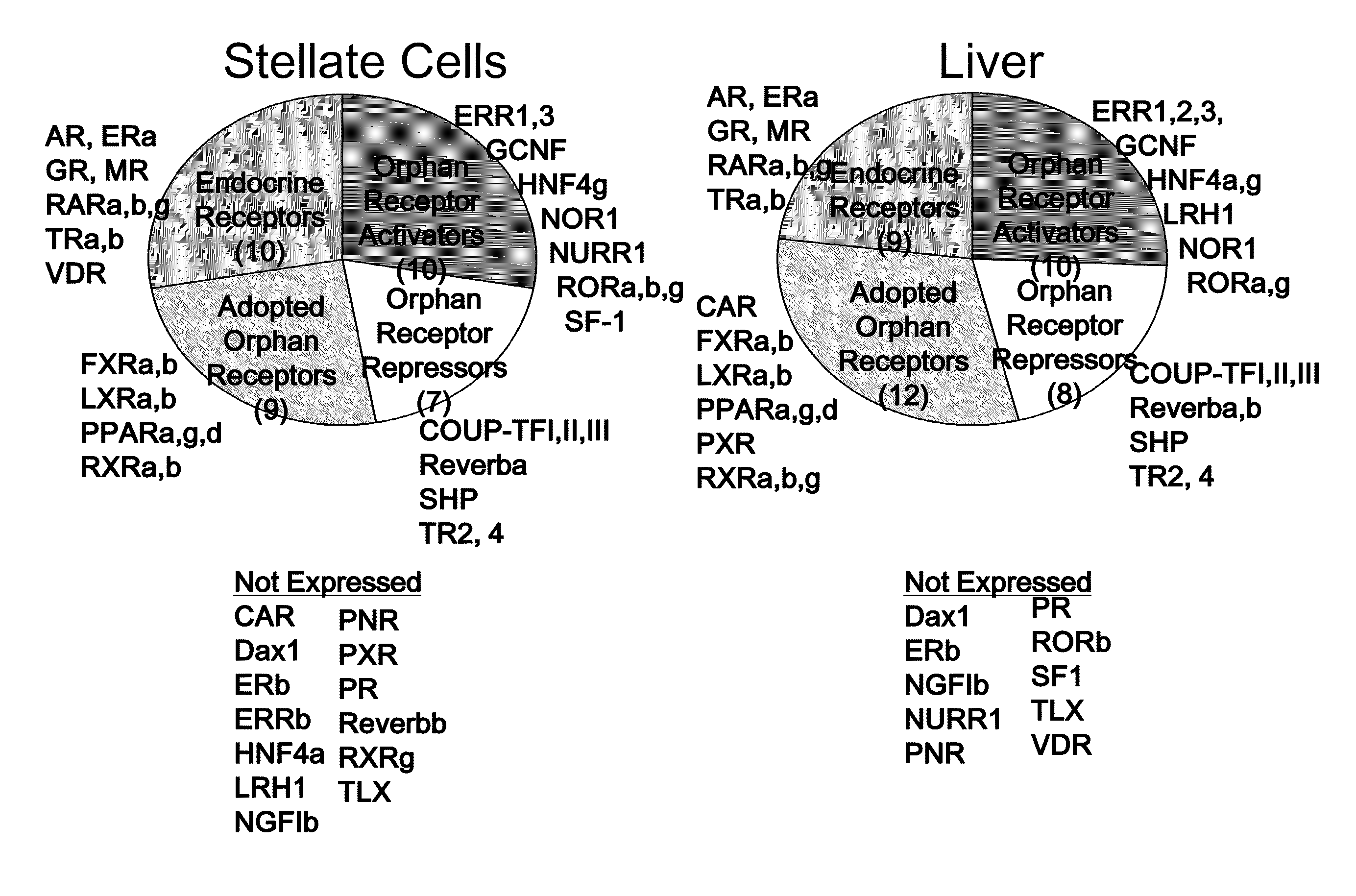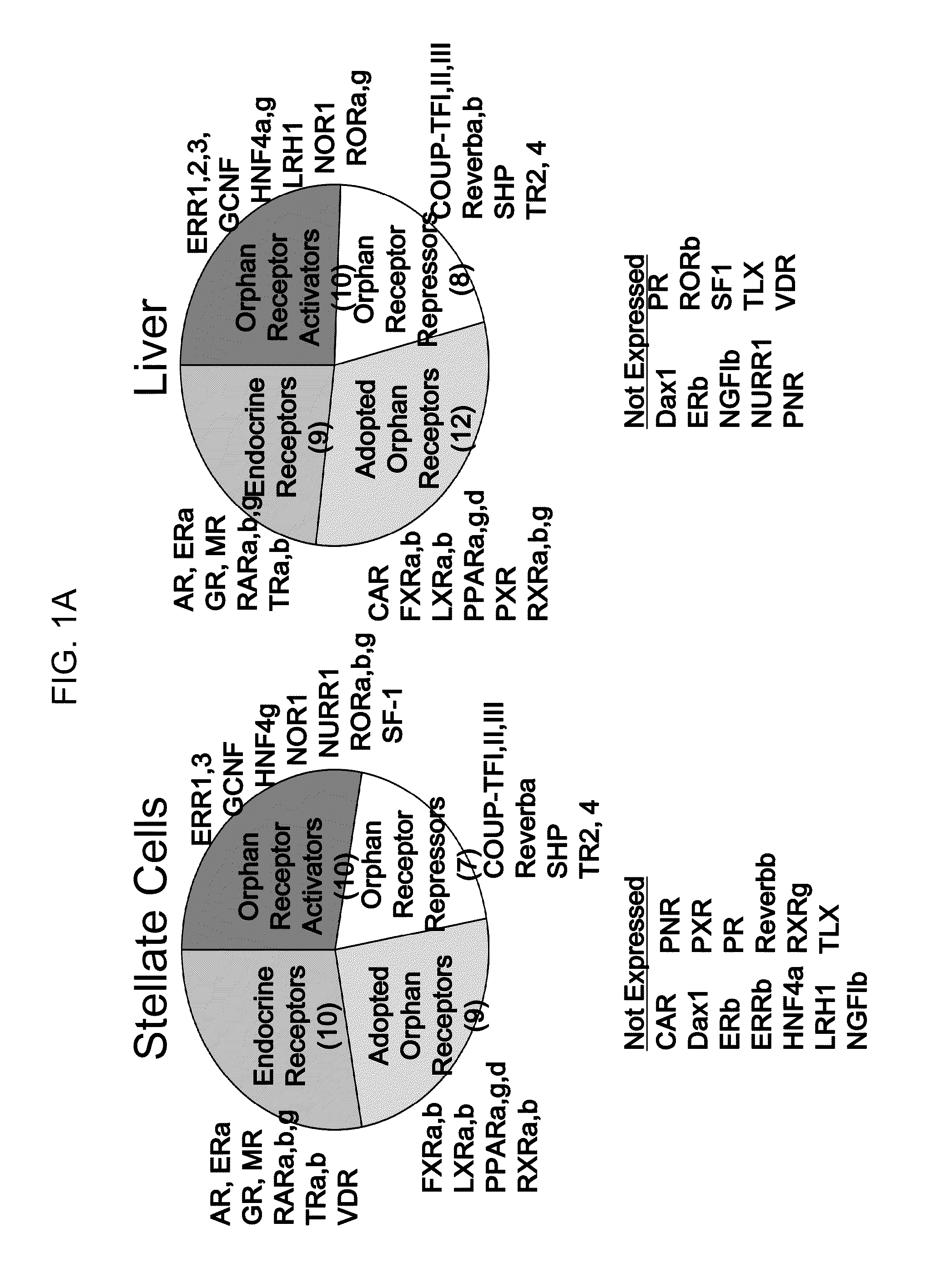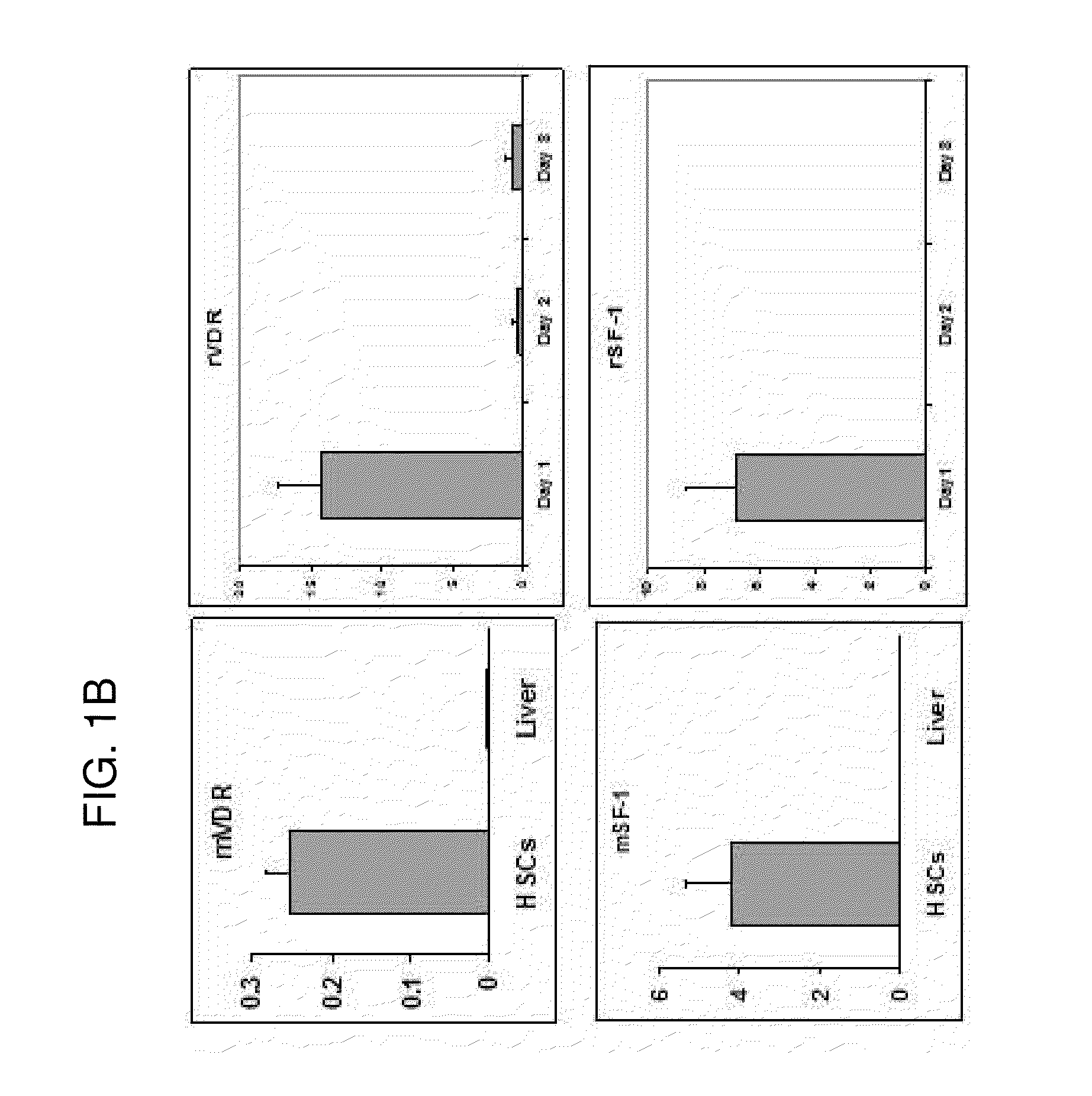Use of vitamin d receptor agonists and precursors to treat fibrosis
a technology of vitamin d receptor and precursors, applied in the field of fibrosis treatment, prevention and amelioration, can solve the problems of cirrhosis, liver failure, portal hypertension, etc., and achieve the effects of promoting survival of hepatocytes, preserving liver function, and facilitating wound healing respons
- Summary
- Abstract
- Description
- Claims
- Application Information
AI Technical Summary
Benefits of technology
Problems solved by technology
Method used
Image
Examples
example 1
Materials and Methods
[0225]This Example provides specific materials and methods used to carry out Examples 2-4. Although particular methods are provided, one of skill in the art will appreciate that other similar methods can be used in place of those described.
A. Culturing of NPCs
[0226]Quiescent mouse HSCs were cultured on Matrigel in DMEM medium containing 4.5 g / L glucose and 16% fetal bovine serum (FBS), as previously described by George et al. (J. Hepatol., 39:756-764, 2003), while isolated rat HSCs were cultured in DMEM (GIBCO) containing 20% FBS (JRH) on plastic for 40 hours. Activated HSCs were cultured on plastic rather than Matrigel in the same media described above. Kupffer cells (KCs) were cultured in Williams' medium E containing 10% FBS, 2 mM glutamine on plastic plates. Endothelial cells (SECs) were plated on type I collagen pre-coated plates in modified Medium 199 with 20% serum (10% FBS, 10% horse), insulin (4 mU / ml).
[0227]In brief, cells were obtained from mice and m...
example 2
Comparative Profiling of NPC Cell Populations
[0251]This Example describes a comprehensive profiling of NHR expression in freshly isolated primary HSCs.
[0252]The NHRs are well characterized transcription factors whose activities are modulated by physiological ligands. Obtaining a complete profile of the NHR family in a given cell therefore provides a highly informative snapshot of a cell's function. This knowledge, in turn, allows the identification of small molecule chemical tools with which to manipulate a cell's function. Thus, a comprehensive profiling of NHR expression in freshly isolated primary HSCs from wild type C57B6 mice was performed and these results were compared with those from whole liver. HSCs cells were isolated as described in Example 1. High throughput quantitative PCR identified 36 nuclear receptors expressed in mouse HSCs compared with 39 nuclear receptors in liver (FIGS. 1A and 1B); receptors were deemed expressed if transcripts were detected in less than 35 cy...
example 3
Cytochrome P450 Gene Expression and Regulation in HSC
[0257]This example demonstrates that rodent and human HSC cells express cytochrome P450 genes required to synthesize the active VDR ligand, 1α,25(OH)2D3 (calcitriol), from vitamin D precursor, and that such gene expression can be regulated.
[0258]High throughput gene profiling of the cytochrome P450 gene family was used to analyzed rodent HSC cells and human LX-2 cells. Necessary cytochrome P450 genes (including CYP27A1, CYP27B1, CYP24A1) required to synthesize the active VDR ligand, 1α,25(OH)2D3 (calcitriol), from vitamin D precursors (FIG. 3) were detected in both primary HSCs and the LX-2 cell line (FIGS. 4A-C). Microarray data on rat HSC where a comparison of control against LPS-activated cells showed several differentially expressed genes. Among them CYP27A1 was also up-regulated more than 7-fold upon LPS treatment and CYP27A1 expression in HSCs was further validated by real-time qPCR (FIGS. 4A and 4C). Real-time qPCR data (FI...
PUM
| Property | Measurement | Unit |
|---|---|---|
| quantitative real time PCR | aaaaa | aaaaa |
| quantitative real time PCR | aaaaa | aaaaa |
| concentrations | aaaaa | aaaaa |
Abstract
Description
Claims
Application Information
 Login to View More
Login to View More - R&D
- Intellectual Property
- Life Sciences
- Materials
- Tech Scout
- Unparalleled Data Quality
- Higher Quality Content
- 60% Fewer Hallucinations
Browse by: Latest US Patents, China's latest patents, Technical Efficacy Thesaurus, Application Domain, Technology Topic, Popular Technical Reports.
© 2025 PatSnap. All rights reserved.Legal|Privacy policy|Modern Slavery Act Transparency Statement|Sitemap|About US| Contact US: help@patsnap.com



